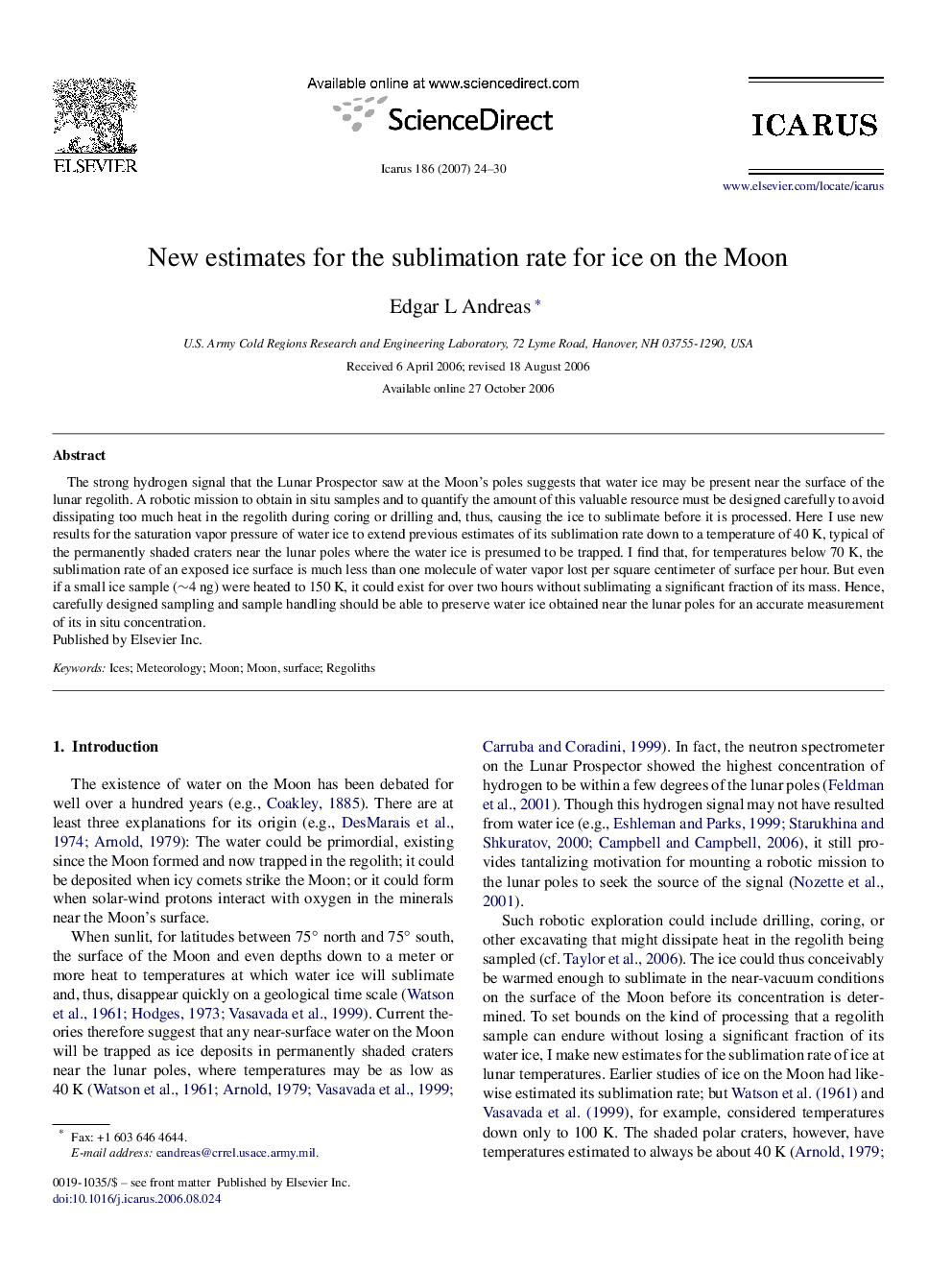| Article ID | Journal | Published Year | Pages | File Type |
|---|---|---|---|---|
| 1775766 | Icarus | 2007 | 7 Pages |
The strong hydrogen signal that the Lunar Prospector saw at the Moon's poles suggests that water ice may be present near the surface of the lunar regolith. A robotic mission to obtain in situ samples and to quantify the amount of this valuable resource must be designed carefully to avoid dissipating too much heat in the regolith during coring or drilling and, thus, causing the ice to sublimate before it is processed. Here I use new results for the saturation vapor pressure of water ice to extend previous estimates of its sublimation rate down to a temperature of 40 K, typical of the permanently shaded craters near the lunar poles where the water ice is presumed to be trapped. I find that, for temperatures below 70 K, the sublimation rate of an exposed ice surface is much less than one molecule of water vapor lost per square centimeter of surface per hour. But even if a small ice sample (∼4 ng) were heated to 150 K, it could exist for over two hours without sublimating a significant fraction of its mass. Hence, carefully designed sampling and sample handling should be able to preserve water ice obtained near the lunar poles for an accurate measurement of its in situ concentration.
